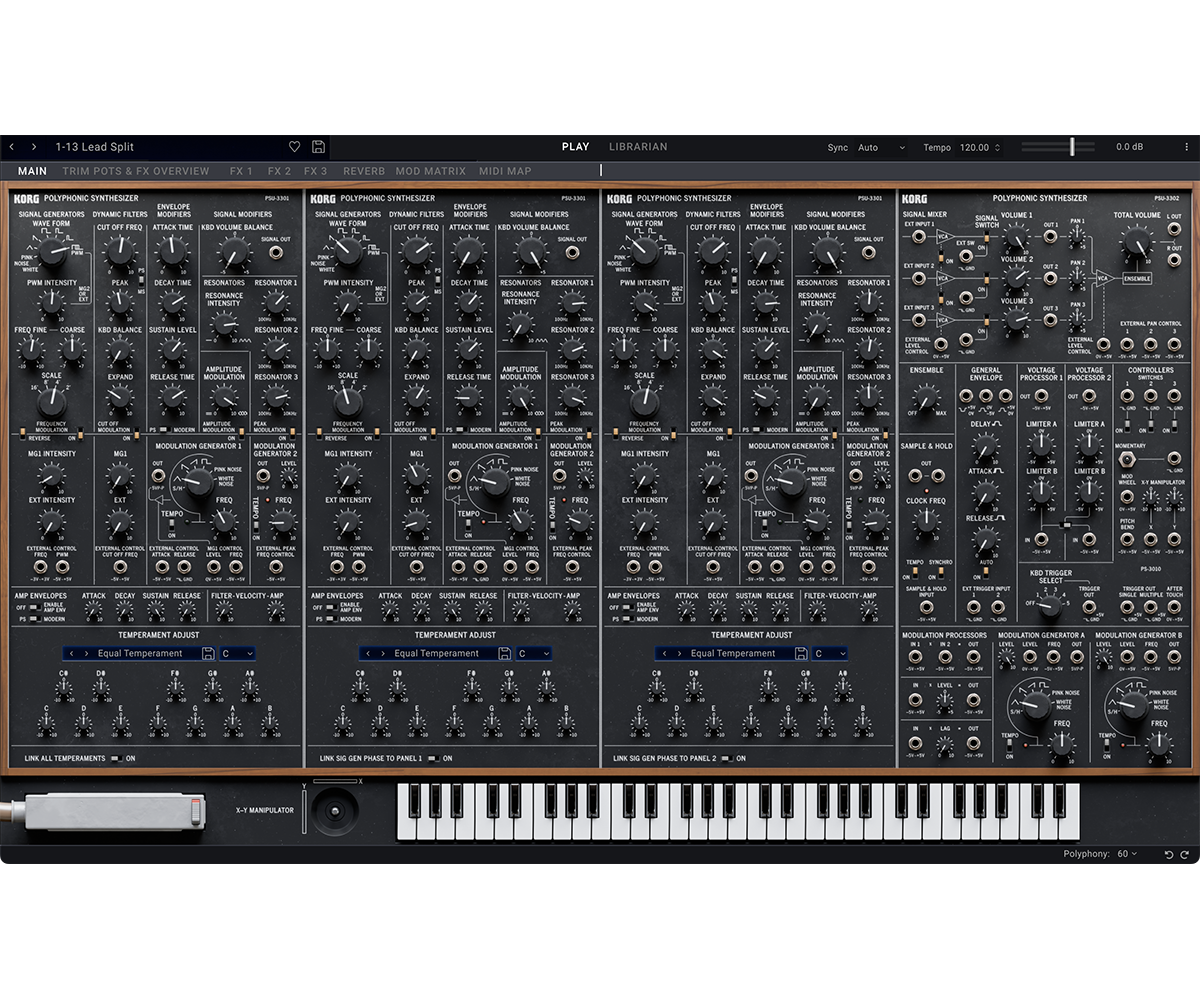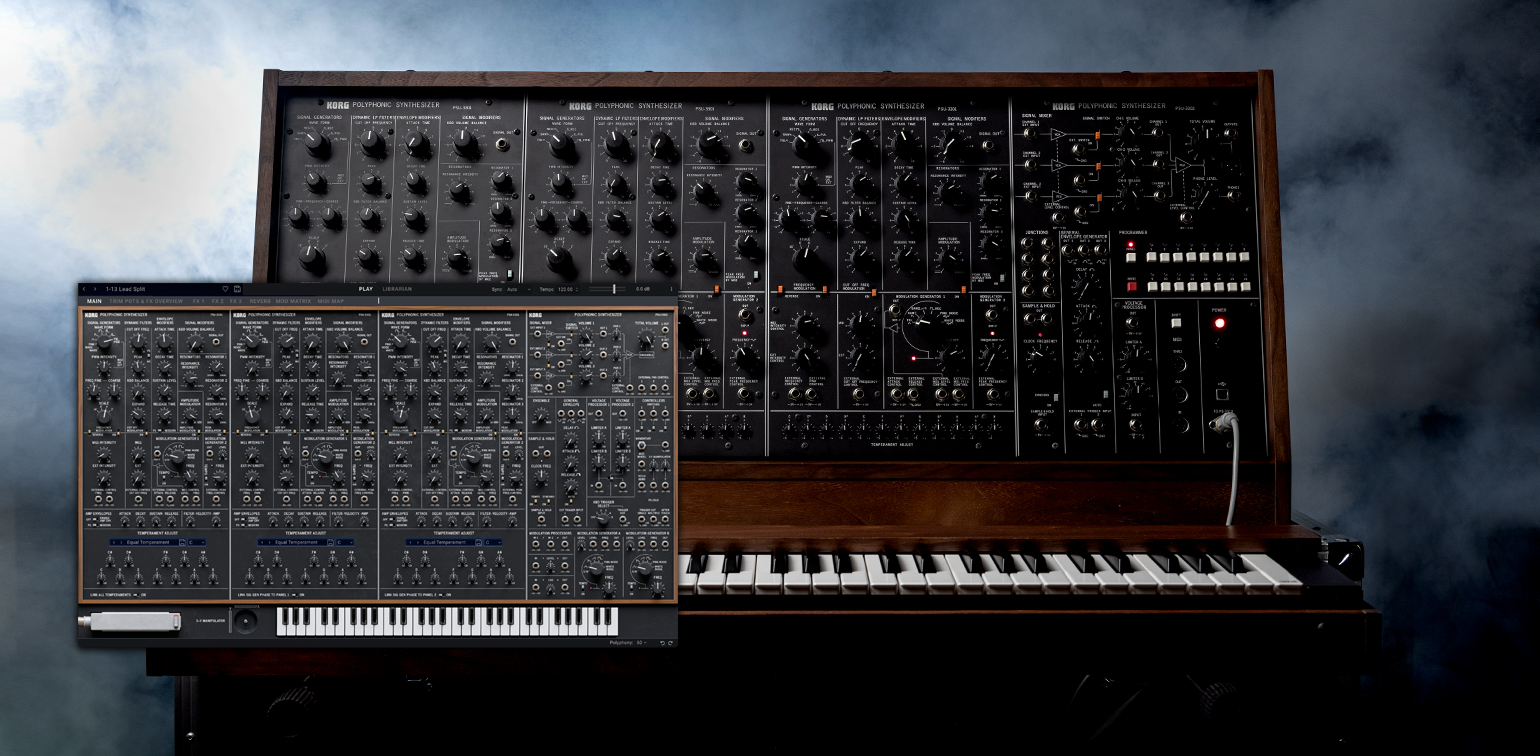
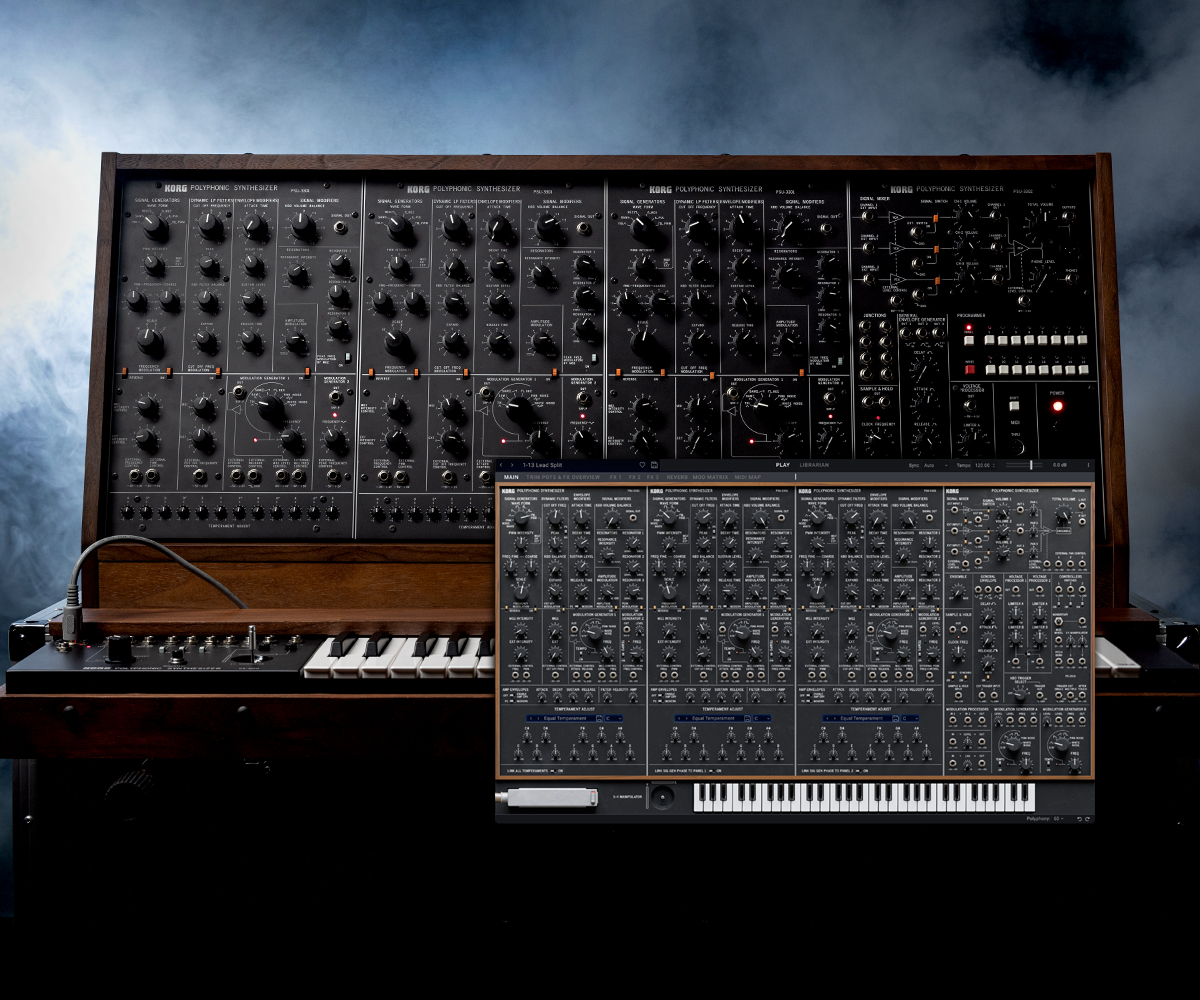
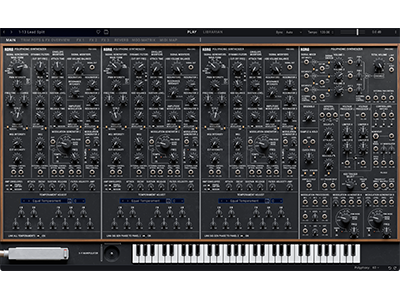
PS-3300 for Mac/PC
POLYPHONIC SYNTHESIZER
Support
Learn More
Related Products
The legendary KORG PS-3300
Introduced in 1977, the original PS-3300 was a unique and magnificent instrument. The semi-modular predecessor to the MS-20, it boasted a remarkable 144 independent synthesizer voices–three for each of its 48 keys. Renowned for its huge, lush, and unmistakable sound, it captivated pioneering artists including Kraftwerk, Jean-Michel Jarre, Keith Emerson, and Aphex Twin. With fewer than 50 of the original units made, it may be the rarest and most sought-after synthesizer ever created.
In 2024, KORG announced the new limited-edition PS-3300 reissue: artfully hand-crafted, physically imposing, and with a sound every bit as distinctive as the original. Of course, it also features modern improvements, such as extensive MIDI control and program storage. Now, KORG is pleased to present the first true re-creation of this legendary synthesizer in software: the KORG Collection PS-3300.
As one of the very first polyphonic synths, the PS-3300 did practically everything differently. It boasted unorthodox filters, octave-divider oscillators, distinctive envelopes, unconventional modulation, a three-layer design, and a semi-modular patch panel. Its three-band resonators not only generated vocal and string timbres, but could also be modulated for phaser, wah, and other dynamic effects. Variations in analog components meant that each of the 144 voices had its own quirks, creating rich, organic, and not-entirely-predictable sounds.
KORG’s proprietary CMT technology faithfully reproduces the whole of this experience - unlike any other software instrument.
KORG Collection 6 | PS-3300 and SGX-2
- KORG's CMT modeling technology brilliantly re-creates all aspects of the original circuitry
- Uncompromising, meticulous modeling and software-exclusive enhancements.
- Extensive MIDI control and a variety of effects, including a modeled ensemble.
- Import programs from the hardware PS-3300 reissue
- Try the demo version first
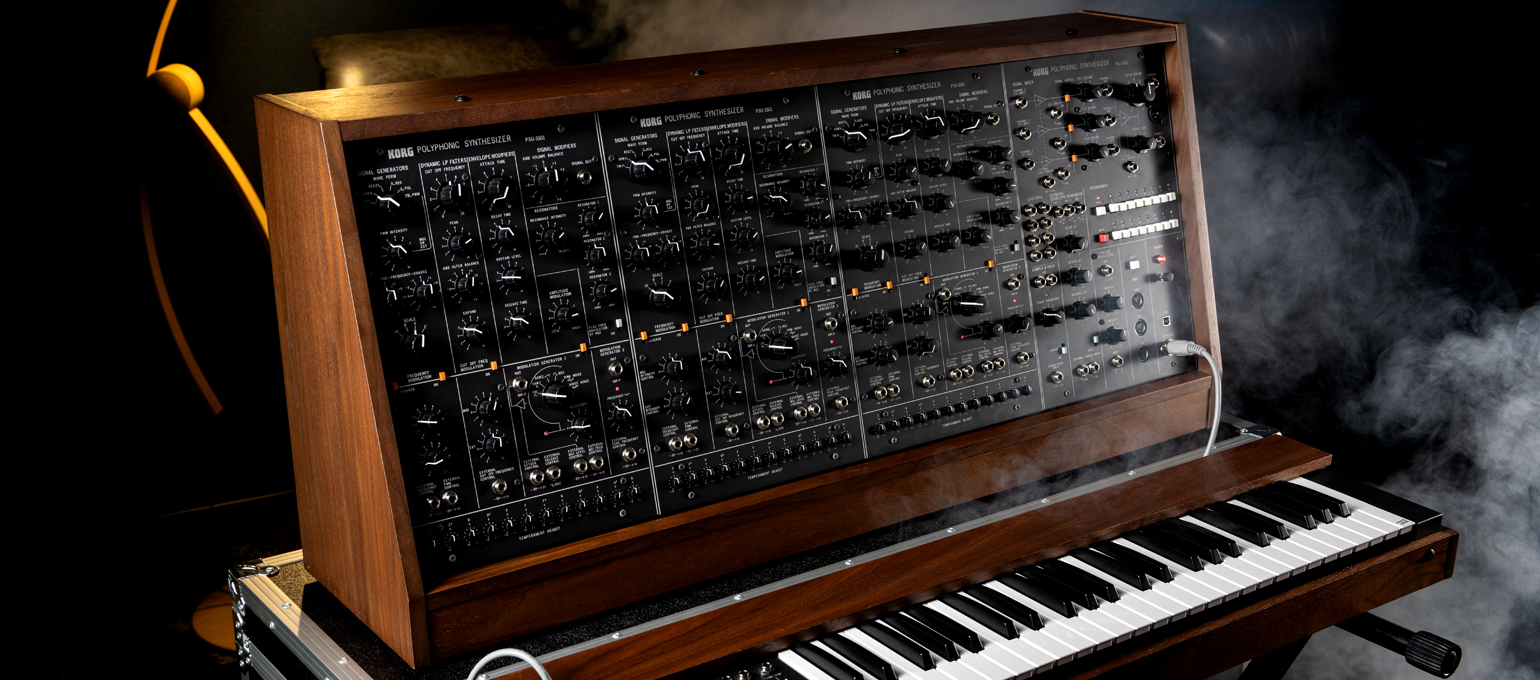
Modeled and enhanced
While this is by far the best-sounding and most accurate software version of the PS-3300 (see below for more details), we didn’t stop there. We’ve also implemented a host of improvements and modifications while preserving its unique character, including:
-
Choice of modeled filters: the refined and gentlemanly PS-3300, or the aggressive MS-20
-
Option to have separate envelopes for filter and amplitude, or to use a single envelope as on the original
-
For all envelopes, a choice of modeled PS-3300 or modern exp/log shapes
-
Additional Modulation Processors, including a Multiplier, Attenuverter, and Lag Processor
-
Additional Modulation Generators (aka LFOs)
-
Stereo pan, with modulation, for the three synth units/p>
-
Modeled Ensemble effect from the PS-3100 and PS-3200
-
White and Pink Noise available directly from the Signal Generator (aka oscillator)
-
Sample and Hold available directly from Modulation Generators
-
Option to link inter-panel oscillator phase, for string synth and combo organ sounds
-
Tempo sync options in all appropriate places
-
Expanded pitch range–a superset of the vintage and reissue keyboards, plus an extra fifth in the bass
-
Built-in mults for all output jacks
-
…and many other small but useful enhancements
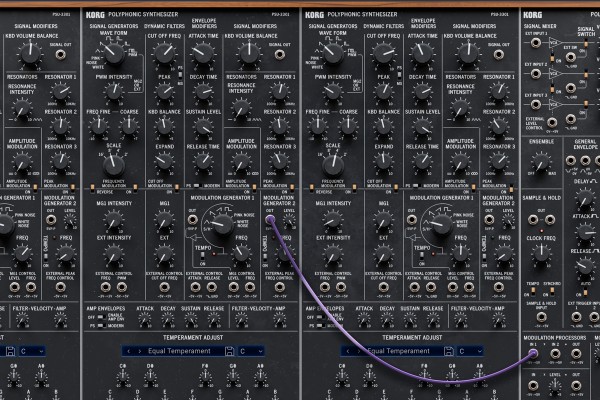
Easy to learn
Unlike a modular synth, cables are completely optional on the PS-3300; you can make incredible sounds just by moving the knobs. When you do use cables, they show the signal flow direction, and inapplicable patch points fade into the background. On-screen help has information and useful tips for every knob, switch, and jack.
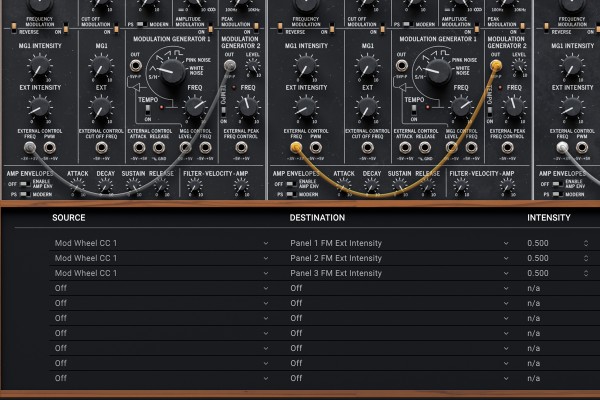
Extensive MIDI control
The KORG Collection PS-3300 includes three different mechanisms for MIDI control. First, you can introduce MIDI signals directly via the patch panel, including aftertouch, mod wheel, pitch bend, and the X-Y Manipulator. There’s also a 30-slot mod-matrix for modulating parameters from MIDI sources. Finally, MIDI Mapping lets you directly move sliders, knobs, and buttons from your favorite MIDI controller.
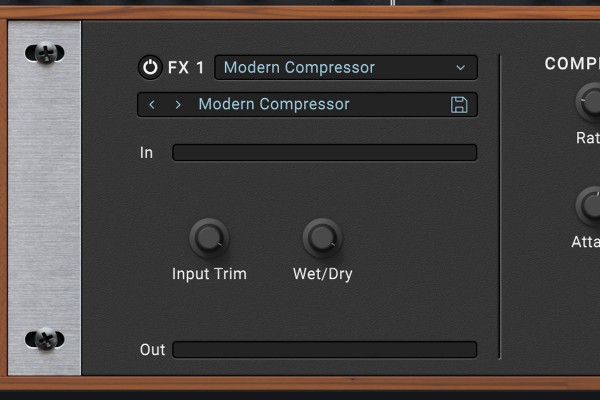
Effects
The PS-3300 had two smaller siblings, the PS-3200 and PS-3100. Neither had the richness of the PS-3300’s three layered voices, and so they added an Ensemble effect instead. As befits the PS series, it both sounded great and had an unusual design. We couldn’t resist including it on the patch panel of the KORG Collection PS-3300. In addition to the modeled Ensemble, we’ve included three insert effects and a dedicated reverb slot. There are 31 effects types to choose from, including everything from vintage pedals, guitar amps, and tape delay to modern reverse delays and shimmer reverb.
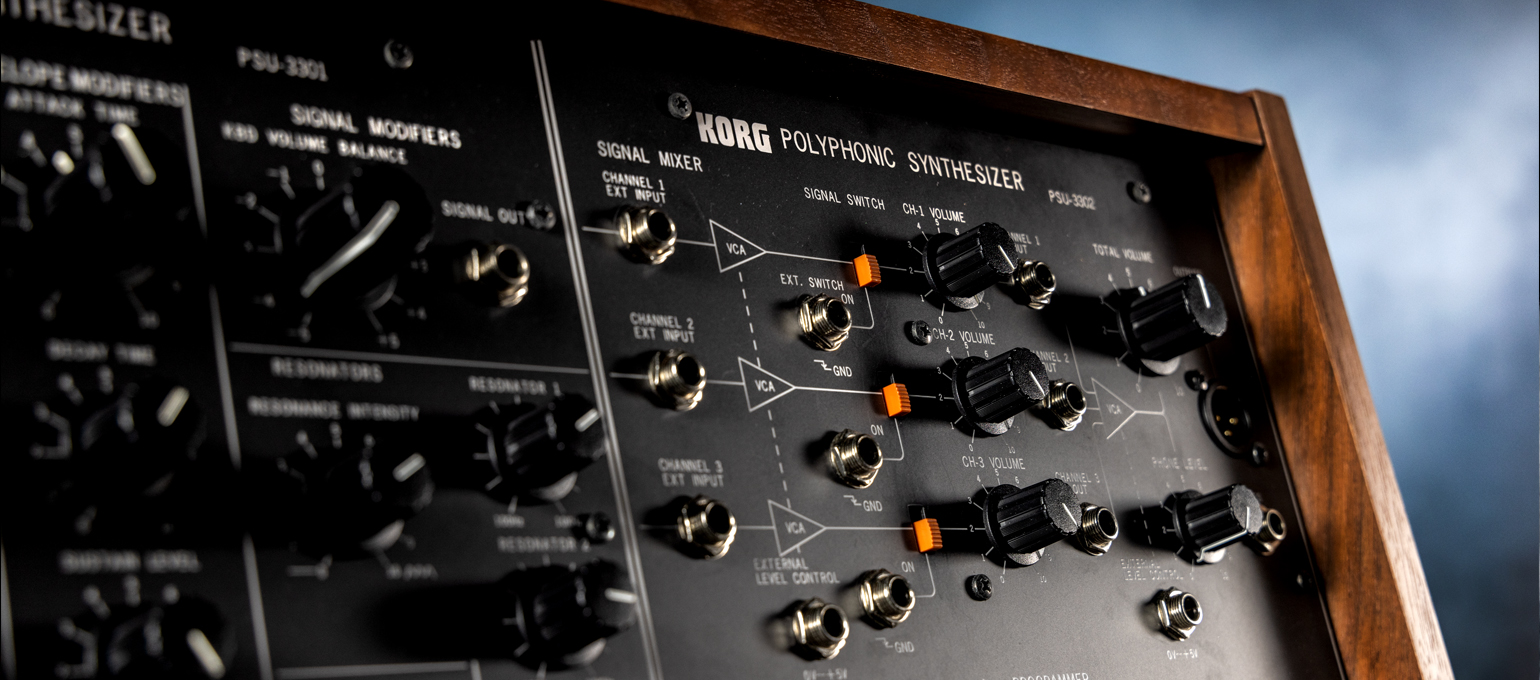
Import programs from the hardware PS-3300 reissue
Once we’d gone through the process of meticulously recreating the sound and behavior of the hardware PS-3300, it was only natural to support program import as well. Use the hardware’s Sound Librarian to save programs to your macOS or Windows computer, and import them into the KORG Collection PS-3300–it’s as simple as that.
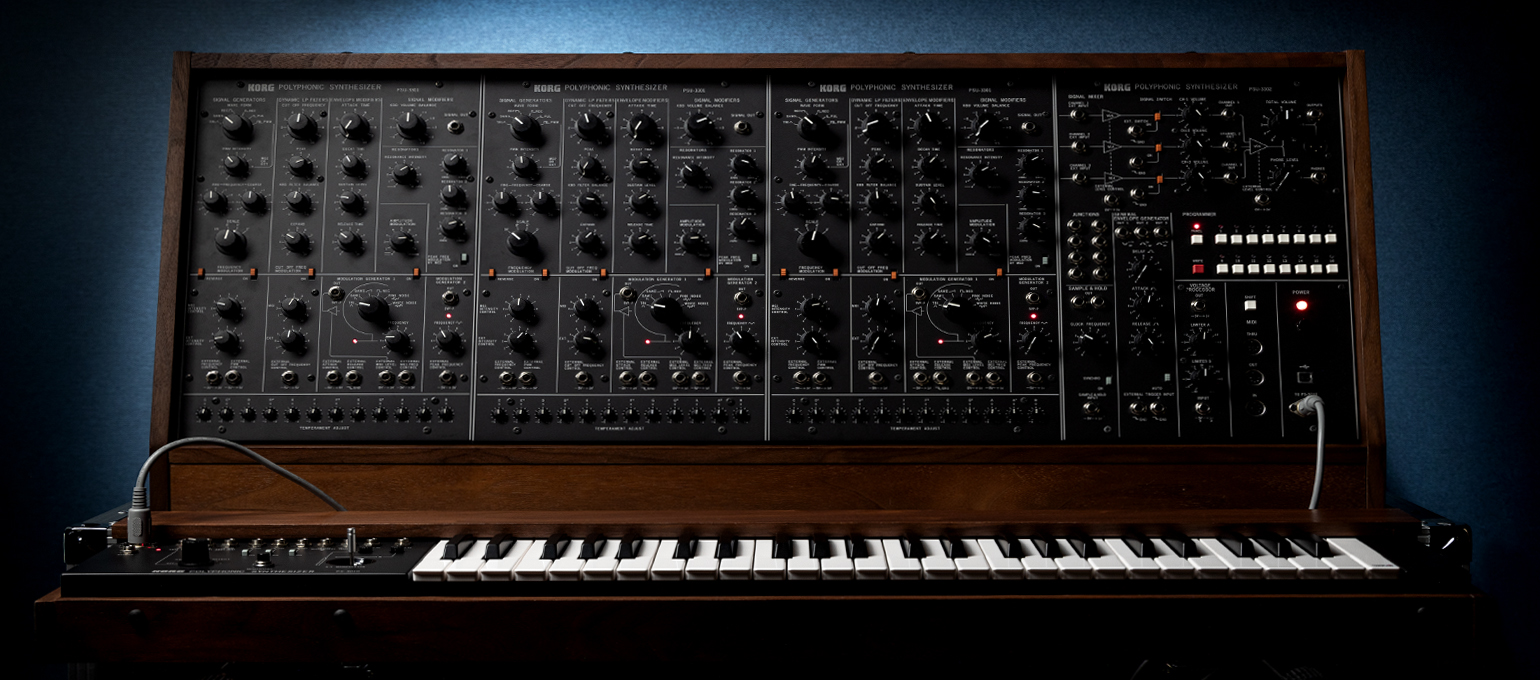
Technical details: modeling the PS-3300
Our engineers spent almost a year understanding every detail of the original and modern schematics, testing with laboratory gear, and most importantly listening. The result is a software instrument which not only sounds fantastic, but gets remarkably close to its hardware inspiration. For synth aficionados who love under-the-hood technical details as much as we do, here are some of the points that distinguish the KORG Collection PS-3300 from the imitators.
Modeled Top-Octave Dividers
With the real PS-3300, chromatic tuning can (and does!) vary, but all octaves (e.g. C2, C3, C4) are perfectly in phase. You can tell this by playing a set of octaves; the resulting waveform will be clear and regular, creating the classic “bite” tone, and the volume is much higher than the out-of-phase octaves on ordinary polyphonic synths.
Modeled Signal Generator Waveforms
The waveforms of the Signal Generators (aka oscillators) are generated by processing the Top-Octave Divider output. Imperfections in this process are reflected in the shapes of the triangle and saw waveforms, and in the width of the pulse waveforms. All of this is affected by Voice Variation (see below).
Modeled Filter
Very unusually, resonance is an integral part of the PS-3300 filter design, rather than a separate feedback path. From the user perspective, this means that resonance and cutoff interact. The resonance level goes down at higher cutoffs, and cutoff goes down slightly at high resonance.
Modeled Envelopes
The PS-3300 envelopes have an unusual circuit design, resulting in a number of distinctive behaviors. The attack segment is essentially linear, enabling both very sharp attacks and uncommonly gradual fade-ins. Decay and sustain interact; if you lower sustain, decay is modified to keep the time roughly similar. Release, on the other hand, stays constant, so higher sustain results in longer release times. Finally, even with maximum sustain, the envelope still decays over time.
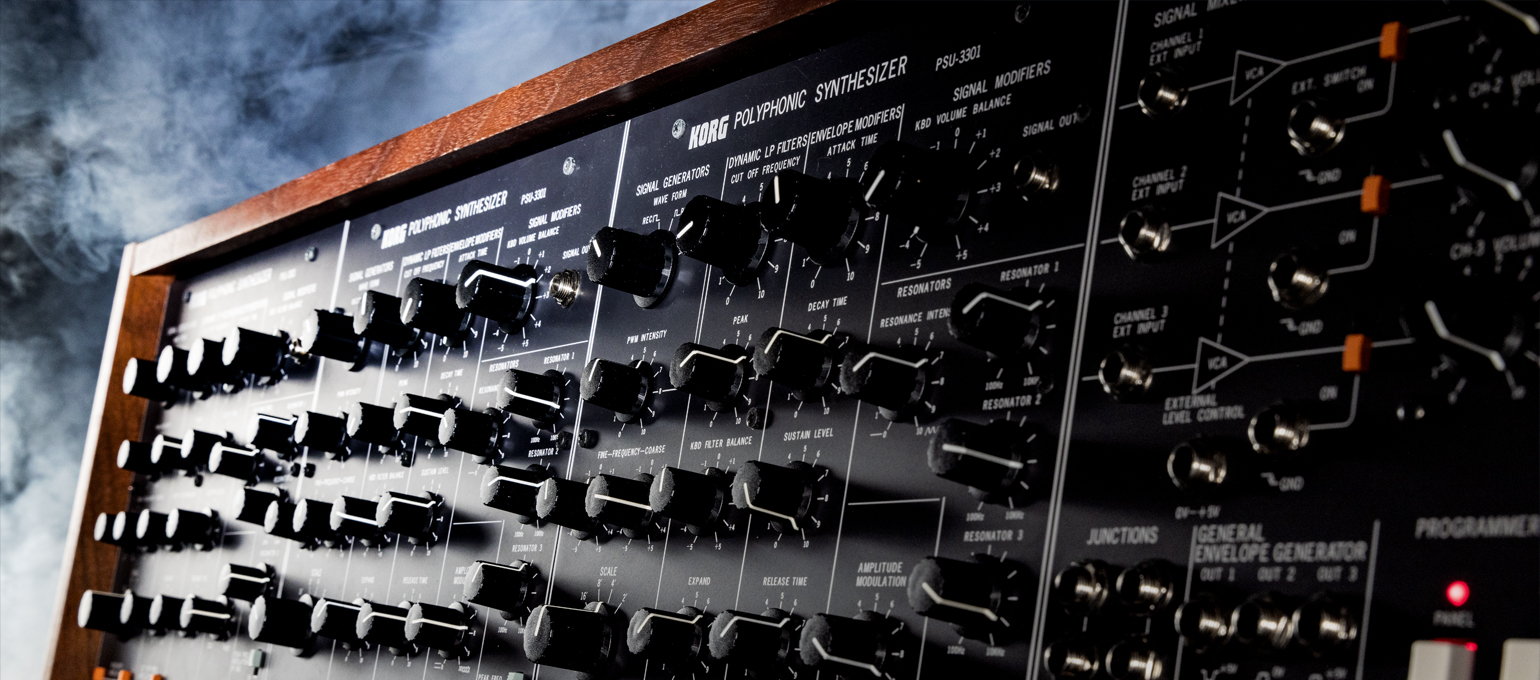
Modeled Envelope-to-Filter Modulation
The PS-3300 has a very unusual method for envelope modulation of filter cutoff: downward expansion from the cutoff knob, controlled by the EXPAND knob. The cutoff knob sets the maximum level, reached at the end of the attack; increasing EXPAND makes the filter darker at lower envelope levels.
Modeled LFO Waveforms
MG 1 (aka LFO 1) is a traditional VCO, generating all waveforms from the saw. As with the Signal Generators, the triangle is a folded version of the saw, with discontinuities at the peaks. MG 2 is a completely different circuit, with a differently-shaped triangle wave and a different frequency range. Both have interesting inaccuracies, exposed in the KORG Collection PS-3300 through Voice Variation.
Modeled noise modulation
White noise is important for choir and “breathy” sounds–but on the vintage PS-3300, it was not available directly as a signal source. Instead, classic PS-3300 programs make these timbres by using white noise from an LFO (MG 1) to modulate pitch and filter cutoff at audio rates. It’s a compelling alternative to the more common approach, and one more factor that contributes to the PS-3300’s unique voice.
Modeled Voice Variation
A major aspect of the PS-3300’s sound is that each note on each of the three synth units has its own dedicated wave-shaper, filter, envelope, and VCA, for an astonishing total of 144 separate voice circuits (expanded to 180 in the software). Korg’s Component Modeling Technology (CMT) includes modeled component-to-component variations for each of those voice circuits, affecting almost every synthesis parameter. Envelope times, for example, can vary by up to 2x from note to note. Vibrato depths vary subtly, creating a fuller, more organic sound. For each individual program, you can dial in as much or as little variation as you like.
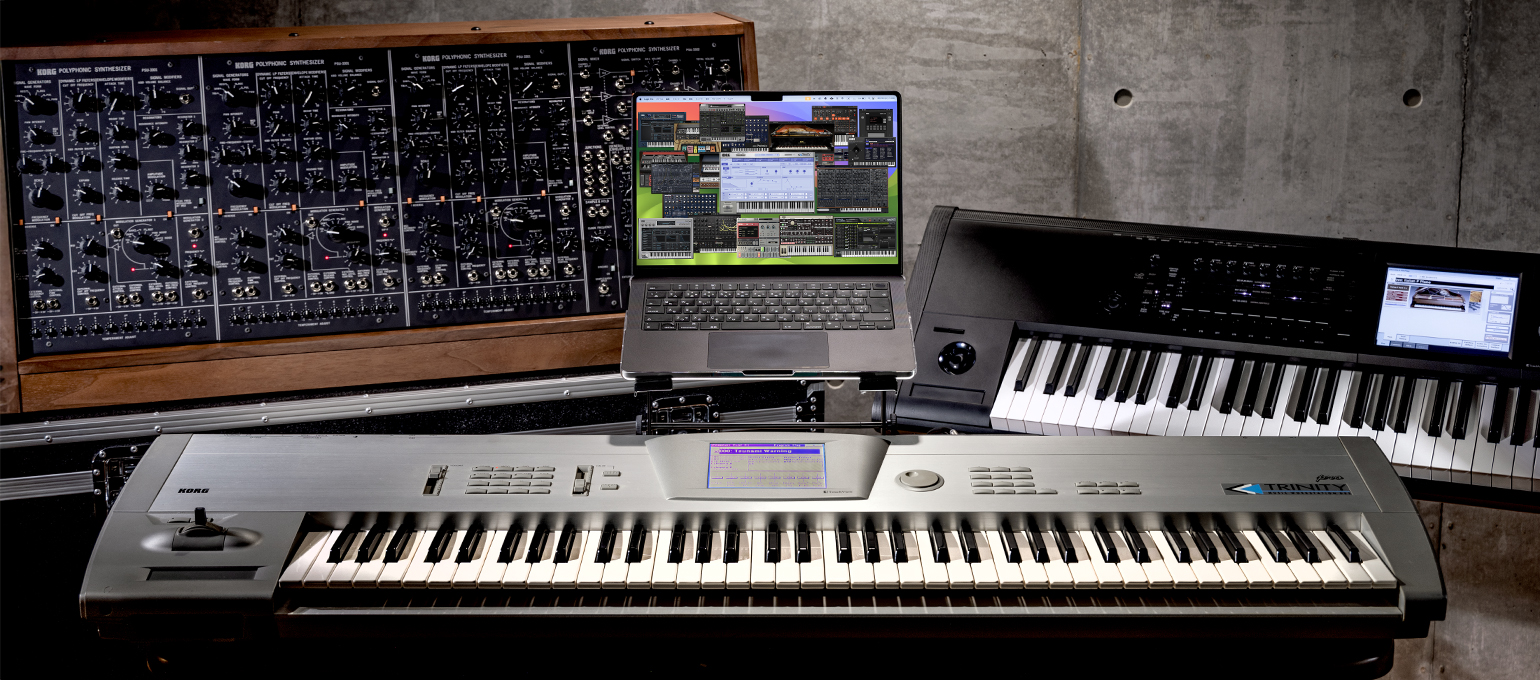
Try the demo version
Before authorization, the KORG Collection PS-3300 runs in a free demo mode. You can play all of the sounds and explore all of its incredible capabilities, with only two restrictions: the software can only be used for 20 minutes at a time, and saving is disabled. To get started, create a free KORG ID account, download the Korg Software Pass (KSP) installation manager, and then use KSP to install the demo.
Included in the KORG Collection
The PS-3300 for Mac/PC is included in KORG Collection 6. With 20 KORG and ARP instruments and effects, the KORG Collection delivers a wealth of classic analog and digital synths, groove and DJ tools, and essential acoustic and electric keyboard instruments.






